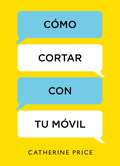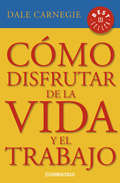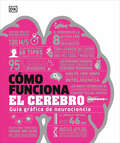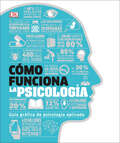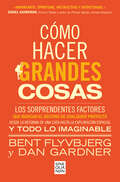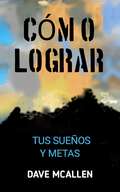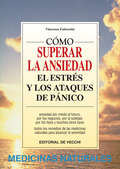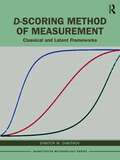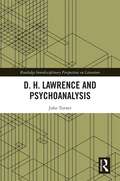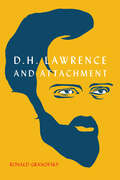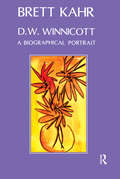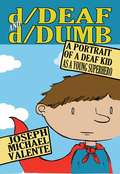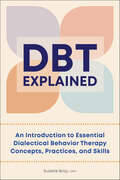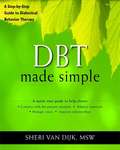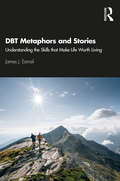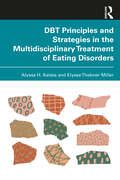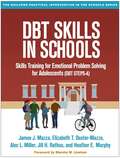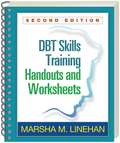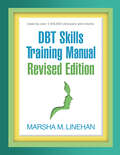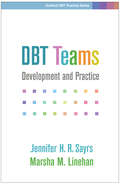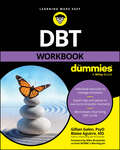- Table View
- List View
Cómo cortar con tu móvil
by Catherine PriceHemos pasado buenos ratos a su lado, nos ha acompañado a cenas y bodas... Pero ha llegado el momento de decir «querido móvil: ¡tenemos que hablar!» ¿Tu teléfono es lo primero que buscas por las mañanas y lo último que ves antes de ir a dormir? ¿Miras tu móvil con frecuencia solo para verificar y cuarenta y cinco minutos más tarde te preguntas cómo ha pasado todo este tiempo? ¿Dices que quieres desengancharte de tu teléfono, pero no tienes ni idea de por dónde empezar? El móvil puede ser un arma de doble filo y, si no aprendemos a usarlo, podemos llegar a depender seriamente de él. Sin apenas darnos cuenta, estos dispositivos están cambiando nuestro modus operandi e, incluso, nuestro cerebro: los hábitos, la capacidad de concentración, los patrones de sueño, nuestra memoria y, sobre todo, nuestras relaciones sociales se ven afectadas por el uso continuo del Smartphone. Para poner solución a esta realidad, Catherine Price nos propone: -Estrategias y trucos para desengancharnos del móvil. -Un plan de 30 días para dejar de pasar horas y horas frente a él. -Cómo configurar nuestro teléfono para aprovechar al máximo su potencial. En este libro descubrirás cómo las aplicaciones están diseñadas para ser adictivas, y aprenderás cómo nos afecta el tiempo que pasamos enganchados. Todos tenemos esta relación amor-odio con el móvil, pero ha llegado el momento de tomar de nuevo el control nuestro tiempo y de nuestra vida.
Cómo cortar con tu móvil
by Catherine PriceHemos pasado buenos ratos a su lado, nos ha acompañado a cenas y bodas... Pero ha llegado el momento de decir «querido móvil: ¡tenemos que hablar!» ¿Tu teléfono es lo primero que buscas por las mañanas y lo último que ves antes de ir a dormir? ¿Miras tu móvil con frecuencia solo para verificar y cuarenta y cinco minutos más tarde te preguntas cómo ha pasado todo este tiempo? ¿Dices que quieres desengancharte de tu teléfono, pero no tienes ni idea de por dónde empezar? El móvil puede ser un arma de doble filo y, si no aprendemos a usarlo, podemos llegar a depender seriamente de él. Sin apenas darnos cuenta, estos dispositivos están cambiando nuestro modus operandi e, incluso, nuestro cerebro: los hábitos, la capacidad de concentración, los patrones de sueño, nuestra memoria y, sobre todo, nuestras relaciones sociales se ven afectadas por el uso continuo del Smartphone. Para poner solución a esta realidad, Catherine Price nos propone: -Estrategias y trucos para desengancharnos del móvil. -Un plan de 30 días para dejar de pasar horas y horas frente a él. -Cómo configurar nuestro teléfono para aprovechar al máximo su potencial. En este libro descubrirás cómo las aplicaciones están diseñadas para ser adictivas, y aprenderás cómo nos afecta el tiempo que pasamos enganchados. Todos tenemos esta relación amor-odio con el móvil, pero ha llegado el momento de tomar de nuevo el control nuestro tiempo y de nuestra vida.
Cómo disfrutar de la vida y el trabajo
by Dale Carnegie¿Se ha detenido a pensar que casi todos nos pasamos la mayor parte denuestra vida dedicados a nuestro trabajo?, pregunta Carnegie al lectoren el prólogo de este libro. El hecho mismo de que nuestras vidas esténen gran medida consagradas a nuestras tareas influye poderosamente sobrenuestros estados de ánimo y de alegría de sentir que nuestro desempeñojustifica tanto esfuerzo y tanta concentración. O bien podemos sentirnosfrustrados, abrumados por la fatiga o el hastío...Este libro es producto de una selección de capítulos de dos de loslibros más afamados del autor: «Cómo ganar amigos e influir sobre laspersonas» y «Cómo suprimir las preocupaciones y disfrutar de la vida».De esos libros se han seleccionado las partes que más pueden interesar aquienes deseen comprobar que sacan el mayor partido de sus posibilidadesy de sus recursos personales: «Este libro le ayudara a lograr esospropósitos», dice Dorothy Carnegie en el prólogo a los lectores.
Cómo funciona el cerebro (DK How Stuff Works)
by DKDescubre el funcionamiento de la estructura más compleja y enigmática que se conoce: el cerebro humano.¿Existen diferencias entre el cerebro de un hombre y de una mujer? ¿Por qué los adolescentes son impulsivos y rebeldes? ¿Cuándo podremos conectar nuestros cerebros a la nube? Encuentra las respuestas a estas y otras preguntas en el interior de este libro sobre el cerebro basado en las últimas investigaciones en neurociencia.¡Pasa las páginas para encontrar increíbles contenidos!-Texto simple y gráficos paso a paso con los que entenderás más fácilmente cómo funciona el cerebro.-Capítulos que abordan temas como la memoria, el aprendizaje, la conciencia, la personalidad, las emociones y la comunicación. -Datos curiosos y llamativas imágenes que te ayudarán a visualizar su estructura interior y su conexión con el resto del cuerpo.-Respuestas a las preguntas más frecuentes: cómo mejorar la memoria, la concentración o cómo dormir mejor. -Incluye una guía sobre los trastornos del cerebro, que incluye tanto problemas físicos, como tumores y accidentes cerebrovasculares, como trastornos psicológicos y funcionales, como el autismo o la esquizofrenia. Aprende cómo el cerebro regula la respiración y los latidos del corazón, cómo recopila información y se la envía a los órganos de los sentidos para generar una respuesta, y mucho más. ¡Descúbrelo todo sobre el órgano más misterioso del cuerpo humano y amplía tu conocimiento sobre anatomía! La colección de DK How it Works en español explica temas complejos de forma clara y visual a través de infografías, textos sencillos e información fácil de entender tanto para estudiantes como para lectores generales que quieran ampliar sus conocimientos.Are men's and women's brains really different? Why are teenagers impulsive and rebellious? And will it soon be possible to link our brains together via the Cloud?Drawing on the latest neuroscience research, this visual guide makes the hidden workings of the human brain simple to understand. How the Brain Works begins with an introduction to the brain's anatomy, showing you how to tell your motor cortex from your mirror neurons. Moving on to function, it explains how the brain works constantly and unnoticed to regulate heartbeat and breathing, and how it collects information to produce the experiences of sight, sound, smell, taste, and touch. The chapters that follow cover memory and learning, consciousness and personality, and emotions and communication.There's also a guide to the brain's disorders, including physical problems, such as tumors and strokes, and psychological and functional disorders, ranging from autism to schizophrenia. Illustrated with bold graphics and step-by-step artworks, and sprinkled with bite-sized factoids and question-and-answer features, this is the perfect introduction to the fascinating world of the human brain.
Cómo funciona la psicología (DK How Stuff Works)
by DK¿Cómo podemos reprogramar la mente y aprender mejor? ¿Qué técnicas nos ayudan a rebajar la tensión cuando negociamos? ¿Qué trucos psicológicos usan los anunciantes para lograr que compremos más?Explora la mente humana y descubre la ciencia que se oculta detrás del modo en que pensamos y actuamos con esta increíble guía visual de psicología.Mediante claras explicaciones, esquemas y gráficos este libro de psicología en español explica trastornos como la ansiedad y la paranoia, así como las distintas terapias que se utilizan para tratarlas, desde la cognitivo-conductual hasta el psicoanálisis, las terapias de grupo y las artísticas.Clara y fácil de entender tanto para estudiantes como para lectores con un interés más general, esta obra explora los diversos planteamientos que utilizan los psicólogos para estudiar la manera que tienen las personas de pensar y de comportarse, como el conductismo, la psicología social, la psicología clínica, la conductista y el humanismo. Uno de los libros de psicología clave para acercarte a los diferentes enfoques de esta disciplina.Este libro es compañero ideal para El libro de la psicología de la serie Big Ideas (Spanish Edition).Descubre el funcionamiento de la menteCómo funciona la psicología nos muestra el modo en que la ciencia de la psicología se puede aplicar a las situaciones del mundo real con ejemplos que van desde el trabajo hasta el deporte, desde los tribunales hasta las escuelas. Averigua por qué la psicología desempeña un enorme papel a lo largo de toda nuestra vida y comprende mejor qué es lo que influye en nuestra conducta, en nuestros pensamientos y sentimientos y en los de los demás, en toda una variedad de entornos y escenarios. Este libro te hará pensar de otro modo sobre la vida, las personas y tus relaciones.Descubre todo lo que necesitas saber para tener una base sólida en esta ciencia a través de los siguientes capítulos:Qué es la psicología.Trastornos psicológicos.Terapias curativas.La psicología en el mundo real.Cómo funciona la psicología, pertenece a la colección de libros juveniles en español de Conocimiento de la editorial DK, un rincón de nuestro catálogo destinado a mentes jóvenes curiosas que estén interesadas en conocer más sobre el mundo que les rodea, con disciplinas tales como la filosofía, economía y psicología. Los títulos incluidos en esta colección responden a infinidad de preguntas con un lenguaje sencillo y cercano y se apoyan en formidables ilustraciones y esquemas para ayudar a entender complejos asuntos y teorías que capten el interés del público juvenil, mientras desarrollan sus habilidades lectoras y sus conocimientos generales.
Cómo hacer grandes cosas: Los sorprendentes factores que marcan el destino de cualquier proyecto
by Bent Flyvbjerg Dan GardnerLos secretos para planificar y llevar a cabo con éxito proyectos de cualquier envergadura, por el mayor experto munidal en megaproyectos. Nada es más inspirador que una ambiciosa visión que se convierte en una realidad triunfante: el Empire State Building pasó de ser un boceto a cambiar el skyline de Nueva York en tan solo veintiún meses. Sin embargo, la mayoría de las veces las grandes visiones se convierten en auténticas pesadillas: según las estadísticas, un asombroso 92 por ciento de los megaproyectos superan el presupuesto o el cronograma, o ambas cosas. Incluso los esfuerzos más modestos, como emprender un pequeño negocio, suelen fracasar. ¿Por qué? El profesor de la Universidad de Oxford Bent Flyvbjerg ha dedicado su vida a comprender qué distingue a esos pocos triunfos entre tantos fracasos. En Cómo hacer grandes cosas identifica los errores de juicio y la toma de decisiones equivocadas que llevan al naufragio de los proyectos, ya sean grandes o pequeños. Y muestra cómo tus propios proyectos tienen más posibilidades de éxito si aplicas los principios que él mismo ha investigado durante décadas. Repleto de inolvidables ejemplos que van desde la construcción de la Ópera de Sídney y la creación de los últimos éxitos de taquilla de Pixar, hasta la desastrosa reforma de una casa en Brooklyn, este libro es una guía indispensable para cualquier persona que planee un proyecto ambicioso. Reseñas:«Un libro imprescindible».Frank Gehry, Premio Pritzker «Nadie ha investigado los errores de planificación con más profundidad que Bent Flyvbjerg».Nassim Nicholas Taleb, autor de El cisne negro «Una sabiay vívida combinación de narración inspiradora con décadas de investigación práctica y experiencia».Tim Harford, autor de El economista camuflado «Este libro contiene lecciones para todo tipo de profesionales».The Economist«Ignora este libro bajo tu propio riesgo».The New York Times «Lleno de deliciosas anécdotas sobre gestiones desastrosas de proyectos… y valiosos consejos».Financial Times «Un libro que debería leer cualquier legislador, concejal o ejecutivo».The Wall Street Journal «Cómo hacer grandes cosas no se basa en meras anécdotas; destila décadas de investigación sistemática de más dieciséis mil proyectos llevados a cabo en todo el mundo. El resultado es un patrón nítido de razones sorprendentes por las que casi todos los proyectos humanos fallan como se esperaba, y una hoja de ruta para que los afortunados lectores eviten fracasar».Hans Rosling, autor de Factfulness
Cómo lograr tus sueños y metas
by Dave McAllenEn esta generación que define la obsesión por los consejos, un gran autor se abre camino para mostrarnos cómo dejar de intentar ser "perfectos" todo el tiempo para que podamos alcanzar nuestro máximo potencial y ser personas más felices. La historia ha estado repleta de consejos para actuar, comportarse y hacer las cosas perfectamente, logrados a través de la imitación de mentores. Por lo tanto, existen jueces y profetas que dicen si te irá bien en la vida, si sobresaldrás en una carrera y qué es lo que tienes. Pero Dave tiene hechos crudos y una verdad refrescante para ti: "Gobierna tu destino tú mismo". Cómo lograr tus sueños y metas es su antídoto para la mentalidad mimada y libre de prejuicios que ha infectado al mundo y reconfigurado una generación, beneficiándola con cada perla de alto valor. Dave no está de acuerdo en que, corroborado tanto por la investigación histórica como por ejemplos oportunos, que la gente de éxito se convierta en lo que es hoy depende no de la capacidad de los patrocinadores y los conocedores para predecir nuestro destino con precisión, sino de aprender a descubrirse a sí mismo y mantenerse centrado en nuestros sueños. Todos los humanos tienen debilidades y defectos, con pérdidas y ganancias, altas y bajas, grandes y pequeñas - no todos podemos llegar a ser sobresalientes y grandes. Pero es un desastre mayor si se cambia la dirección natural de nuestra vida. Dave nos aconseja que hagamos un estudio profundo de nosotros mismos para empezar a ser justos con lo que estamos hechos para ser. Una vez hecho esto, abraza tu personalidad en general y deja de poner tu destino en manos de otras personas, ya sean tus compañeros, padres, profesores, etc. Construye el valor, evita los sentimientos, mantente concentrado, sé agresivo y nunca te disculpes.
Cómo vencer la ansiedad, el estrés y los ataques de pánico
by Vincenzo Fabrocini* La ansiedad perturba el ánimo y lo llena de temor, preocupación, incertidumbre, recelo, aprensión y espera. Sus causas son muy diversas conscientes o inconscientes * En este libro se proponen muchas terapias, que se pueden alternar, de forma que los distintos efectos se unan para un mismo fin * Para superar la ansiedad es necesario recorrer varios caminos: aquí encontrará una treintena de métodos biológicos que afectan al pensamiento (técnicas biomédicas) y a la acción (técnicas biofísicas). Sígalas cada día durante por lo menos dos semanas * No tenga miedo: si se ciñe a las indicaciones que se dan, ninguna de las terapias entraña riesgos para su salud. De todos modos, si prefiere someterse a ellas con más seguridad, puede solicitar el consejo de un especialista * Después de dos semanas, si no se siente mejor, rehaga el plan terapéutico. No olvide que probar una y otra vez era el lema de Galileo Galilei, padre de la investigación científica moderna Vincenzo Fabrocini, cirujano, publicista y licenciado en filosofía y letras, se dedica a la divulgación y difusión de terapias complementarias de la medicina oficial. Es presidente del comité de bioética La Torre de Turín. Ejerce de consultor medicolegal y realiza diagnósticos terapéuticos
D-scoring Method of Measurement: Classical and Latent Frameworks (Quantitative Methodology Series)
by Dimiter DimitrovD-scoring Method of Measurement presents a unified framework of classical and latent measurement referred to as D-scoring method of measurement (DSM). Provided are detailed descriptions of DSM procedures and illustrative examples of how to apply the DSM in various scenarios of measurement. The DSM is designed to combine merits of the traditional CTT and IRT for the purpose of transparency, ease of interpretations, computational simplicity of test scoring and scaling, and practical efficiency, particularly in large-scale assessments. Through detailed descriptions of DSM procedures, this book shows how practical applications of such procedures are facilitated by the inclusion of operationalized guidance for their execution using the computer program DELTA for DSM-based scoring, equating, and item analysis of test data. In doing so, the book shows how DSM procedures can be readily translated into computer source codes for other popular software packages such as R. D-scoring Method of Measurement equips researchers and practitioners in the field of educational and psychological measurement with a comprehensive understanding of the DSM as a unified framework of classical and latent scoring, equating, and psychometric analysis.
D. H. Lawrence and Psychoanalysis (Routledge Interdisciplinary Perspectives on Literature)
by John TurnerThis book opens out a wholly new field of enquiry within a familiar subject: it offers a detailed – yet eminently readable – historical investigation, of a kind never yet undertaken, of the impact of psychoanalysis (at a crucial moment of its history) on the thinking and writing of D.H. Lawrence. It considers the impact on his writing, through his relationship with Frieda Weekley, of the maverick Austrian analyst Otto Gross; it situates the great works of 1911-20 in relation to the controversial issues at stake in the Freud-Jung quarrel, about which his good friend, the English psychoanalyst David Eder, kept him informed; and it explores his sympathy with the maverick American analyst Trigant Burrow. It is a study to interest a literary audience by its close reading of Lawrence’s texts, and a psychoanalytic audience by its detailed consideration of the contribution made to contemporary debate by three comparatively neglected analytic thinkers.
D. W. Winnicott (Key Figures in Counselling and Psychotherapy #8)
by Michael Jacobs`The importance of Michael Jacobs' book lies in his attempt to convey. . . Winnicott's profound influence. . . . Jacobs rightly delights in the creativity and imagination of his subject and illustrates these with numerous quotations and descriptions from Winnicott's writings. . . . What is conveyed throughout the book is the essence of Winnicott. . . . [whose] gift was to make psychoanalytic language, methods and concepts more widely available, accepted and appreciated to a nonpsychoanalytic world' - British Psychological Society Counselling Psychology Review One of the best-known British psychoanalysts, D W Winnicott attracts the interest of counsellors and psychotherapists far beyond the strict psychoanalytic tradition in which he was trained. He coined many phrases that have entered the discourse of therapy, such as `good enough mother', `transitional object' and `facilitating environment'. Winnicott has had a profound impact on research into the mother-baby relationship, and his unorthodox manner and sparkling writing style have attracted enthusiastic acclaim. In this book, Michael Jacobs summarizes Winnicott's life and explains his major theoretical concepts. He also rigorously evaluates his practice as a clinician - for example, the holding and management of deeply regressed patients. While highlighting Winnicott's brilliance and creativity, Jacobs is not afraid to scrutinize his contributions more critically. He also discusses criticisms others have made of Winnicott, notably within the psychoanalytic movement. The final chapter assesses the influence of Winnicott's thinking in other countries as well as in Britain.
D.H. Lawrence and Attachment
by Ronald GranofskyThough we all face a tug of war between dependency and autonomy while growing up, British author D.H. Lawrence (1885–1930) experienced the struggle with particular intensity. Later in life, his acute observational skills, high emotional intelligence, and expressive abilities would allow him to articulate this conflict in his works as few other writers have.Applying concepts from attachment theory, D.H. Lawrence and Attachment presents innovative readings of a broad swath of Lawrence’s fiction. Ronald Granofsky teases out hidden patterns in Lawrence’s work, deepening our understanding of his fictional characters and revealing new significance to key thematic concerns like gender identification, marriage, and class. Lawrence’s too-close relationship with his own mother, in particular, was the foundation for his lifelong interest in attachment, as well as the impetus for his literary exploration of the delicate balance between the desire for closeness and the need for separation. While the theories of Margaret S. Mahler, D.W. Winnicott, John Bowlby, and others were developed after Lawrence’s death, his writing about relationships - and how they are influenced by early childhood experiences - bears a striking resemblance to the concepts of attachment theory.The Lawrence who emerges from D.H. Lawrence and Attachment is a psychological writer of great power whose intuitive insights into the vagaries of attachment resulted in rich, complex fiction.
D.W. Winnicott: A Biographical Portrait
by Brett KahrA distillation of painstaking research into the life of Donald Winnicott, tracing his life from his childhood in Plymouth, through his career in paediatrics, to his election as President of the British Psycho-Analytic Society. The author makes many interesting links between Winnicott's life and the development of his theories.
D/deaf And D/dumb: A Portrait Of A Deaf Kid As A Young Superhero (Disability Studies In Education Ser. #10)
by Joseph Valented/Deaf and d/Dumb chronicles the author's dumb, 'deaf kid' origins in Bayport, New York to his current life as a «young superhero» writer. Portraying the conflicting cultural worlds of hearing and Deaf, it describes his life in an in-between underworld and his identity as it alternates between being oppressed and empowered. These feelings are inescapably and forever the reality of those who live on the margins of our larger society.
DBT Explained: An Introduction to Essential Dialectical Behavior Therapy Concepts, Practices, and Skills
by Suzette BrayUnderstand the basics of dialectical behavior therapy (DBT) DBT can help you regulate your emotions and build a life that aligns with your values and goals. This book offers an accessible introduction to the core concepts and practices of DBT, breaking it down into smaller, easier-to-grasp components that make it more manageable to learn and incorporate into your life.What sets this DBT manual apart:DBT fundamentals—Explore what DBT is and how it can support healthier emotional management, helping you let go of destructive behaviors and create new, productive behaviors.Four key skills—Learn the four essential DBT skills—mindfulness, distress tolerance, emotion regulation, and interpersonal effectiveness—and get practical strategies and tips for practicing them.DBT in action—Bring DBT to life through relatable anecdotes and realistic examples that help illustrate the more difficult concepts and skills.Discover the power of DBT and start improving your emotional regulation skills today.
DBT For Dummies
by Blaise Aguirre Gillian GalenKeep calm, be skillful—and take control! Dialectical Behavior Therapy (DBT) is one of the most popular—and most effective—treatments for mental health conditions that result from out-of-control emotions. Combining elements of Cognitive Behavior Therapy with Eastern mindfulness practice, DBT was initially used as a powerful treatment to address the suffering associated with borderline personality disorder. It has since proven to have positive effects on many other mental health conditions and is frequently found in non-clinical settings, such as schools. Whether you struggle with depression, anger, phobias, disordered eating, or want to have a better understanding of emotions and how to focus and calm your mind, DBT practice serves the needs of those facing anything from regular life challenges to severe psychological distress. Written in a no-jargon, friendly style by two of Harvard Medical School’s finest, DBT For Dummies shows how DBT can teach new ways not just to reverse, but to actively take control of self-destructive behaviors and negative thought patterns, allowing you to transform a life of struggle into one full of promise and meaning. Used properly and persistently, the skills and strategies in this book will change your life: when you can better regulate emotions, interact effectively with people, deal with stressful situations, and use mindfulness on a daily basis, it’s easier to appreciate what’s good in yourself and the world, and then act accordingly. In reading this book, you will: Understand DBT theory Learn more adaptive ways to control your emotions Improve the quality of your relationships Deal better with uncertainty Many of life’s problems are not insurmountable even if they appear to be. Life can get better, if you are willing to live it differently. Get DBT For Dummies and discover the proven methods that will let you take back control—and build a brighter, more capable, and promising future!
DBT Made Simple: A Step-by-step Guide To Dialectical Behavior Therapy
by Sheri Van DijkIn the tradition of ACT Made Simple, DBT Made Simple is a manual for therapists seeking to understand and apply the four dialectical behavior therapy (DBT) skills in individual therapy. DBT is an effective treatment for borderline personality disorder, self injury, chemical dependency, trauma related to sexual abuse, and various mood disorders. Key Selling Points: ? New Harbinger excels in publishing accessible and practical DBT books for professionals and laypeople. T
DBT Metaphors and Stories: Understanding the Skills That Make Life Worth Living
by James J. EsmailDBT Metaphors and Stories gives therapists and DBT skills trainers the skills they need to make effective use of dialectical behavior therapy and to help clients more deeply understand complex realities. Each page is devoted to explaining a specific DBT skill. The book is structured so that it can be used in several ways, including as a reference tool to look up specific skills the reader is struggling to understand or (for skills trainers) to teach. The book can also be read cover to cover, both for understanding the broad array of skills and as a source of motivation to devote one’s self to regular practice of skills. It’s a vital guide for trainers, therapists, and their clients interested in fully harnessing DBT’s power to change lives.
DBT Principles and Strategies in the Multidisciplinary Treatment of Eating Disorders
by Alyssa H. Kalata Elysse Thebner MillerDBT Principles and Strategies in the Multidisciplinary Treatment of Eating Disorders is an in-depth exploration of DBT strategies and principles that can be applied by all members of a client’s multidisciplinary team, including dietitians and psychiatric providers. While previous DBT-related texts focus on therapists, counselors, and social workers, this book’s discipline-specific and cross-discipline examples and dialogue, as well as thoughtful descriptions of DBT principles and strategies create an accessible text carefully designed to benefit a wide variety of audiences.By showing the multidisciplinary application of DBT tools and techniques, this book gives providers of all disciplines a shared language and framework that can assist with multidisciplinary case conceptualization, treatment planning, and therapeutic interventions (rather than leaving providers operating in discipline-specific silos that are often atheoretical or eclectic in terms of their framework for conceptualizing and providing care). Exercises embedded throughout the text focus on helping providers implement what they are learning in their day-to-day clinical practice. The book is replete with activities that are focused specifically on assisting providers in implementing DBT strategies, like diary cards, chain analyses, exposure-based procedures, and cognitive modification procedures. Lastly, there is an emphasis on how DBT concepts and methods can be applied in different settings, especially in inpatient, residential, and partial hospitalization settings.DBT Principles and Strategies in the Multidisciplinary Treatment of Eating Disorders is an accessible, practical guide for eating-disorder professionals of all disciplines who would like to integrate DBT principles and strategies into patient care.
DBT Skills In Schools: Skills Training For Emotional Problem Solving For Adolescents (DBT Steps-a) (Guilford Practical Intervention In The Schools Ser.)
by Marsha M. Linehan James J. Mazza Elizabeth T. Dexter-Mazza Alec L. Miller Jill H. Rathus Heather E. MurphyDialectical behavior therapy (DBT) skills have been demonstrated to be effective in helping adolescents manage difficult emotional situations, cope with stress, and make better decisions. From leading experts in DBT and school-based interventions, this unique manual offers the first nonclinical application of DBT skills. The book presents an innovative social–emotional learning curriculum designed to be taught at the universal level in grades 6–12. Explicit instructions for teaching the skills--mindfulness, distress tolerance, emotion regulation, and interpersonal effectiveness--are provided in 30 lesson plans, complete with numerous reproducible tools: 99 handouts, a diary card, and three student tests. The large-size format facilitates photocopying; purchasers also get access to a webpage where they can download and print the reproducible materials.
DBT Skills Training Handouts and Worksheets (Second Edition)
by Marsha M. LinehanFeaturing more than 225 user-friendly handouts and worksheets, this is an essential resource for clients in dialectical behavior therapy (DBT) skills training groups or individual therapy. All of the handouts and worksheets discussed in Marsha M. Linehan's DBT Skills Training Manual, Second Edition, are provided, together with brief introductions to each module written expressly for clients. Originally developed to treat borderline personality disorder, DBT has been demonstrated effective in treatment of a wide range of psychological and emotional problems. Clients get quick, easy access to all needed handouts or worksheets as they work to build mindfulness, interpersonal effectiveness, emotion regulation, and distress tolerance skills. The large-size format and spiral binding facilitate photocopying. Purchasers also get access to a Web page where they can download and print additional copies of the worksheets. Mental health professionals, see also the author's DBT Skills Training Manual, Second Edition, which provides complete instructions for teaching the skills. Also available: Cognitive-Behavioral Treatment of Borderline Personality Disorder, the authoritative presentation of DBT, and instructive videos for clients--Crisis Survival Skills: Part One, Crisis Survival Skills: Part Two, From Suffering to Freedom, This One Moment, and Opposite Action (all featuring Linehan), and DBT at a Glance: An Introduction to Dialectical Behavior Therapy (featuring Shari Y. Manning and Tony DuBose).
DBT Skills Training Manual
by Marsha M. LinehanThe definitive skills training manual embraced by Dialectical Behavior Therapy (DBT) practitioners worldwide is now in a revised edition, reflecting important shifts in language, technology, and daily life. All skills, guidelines, and examples have been retained from the bestselling second edition, with updates throughout to enhance usability and inclusivity. In a convenient 8 1/2" x 11 format, the book provides complete instructions for orienting clients to DBT, structuring group sessions, troubleshooting common problems, and tailoring skills training curricula for different settings and populations. It offers detailed teaching notes for the full range of mindfulness, interpersonal effectiveness, emotion regulation, and distress tolerance skills, and describes how to use the associated handouts and worksheets. Handouts and worksheets are not included in this book; they can be found in the related volume, available separately: DBT Skills Training Handouts and Worksheets, Revised Edition.
DBT Teams: Development and Practice (Guilford DBT Practice Series)
by Marsha M. Linehan Jennifer H. SayrsThe treatment team is an essential component of dialectical behavior therapy (DBT). This much-needed resource from Jennifer H. R. Sayrs and DBT originator Marsha M. Linehan explains how DBT teams work, ways in which they differ from traditional consultation teams, and how to establish an effective team culture. The book addresses the role of the DBT team leader; the structure of meetings; the use of DBT strategies within teams; identifying and resolving common team problems; and important functions before, during, and after suicide crises. User-friendly features include end-of-chapter exercises and reproducible handouts and forms. Purchasers get access to a Web page where they can download and print the reproducible materials in a convenient 8 1/2" x 11" size.
DBT Therapeutic Activity Ideas for Working with Teens: Skills And Exercises For Working With Clients With Borderline Personality Disorder, Depression, Anxiety And Other Emotional Sensitivities
by Carol LozierThis fun and engaging activity book helps to teach teens to manage emotions and develop relationships by tracking their progress using Dialectical Behaviour Therapy (DBT) techniques. DBT is specifically designed for emotionally sensitive young people, especially those with borderline personality disorder, and the activities in this book will help regulate strong emotional responses which can lead to impulsivity, unstable relationships, low self-image and reactive emotions. It is a concise and easy-to-read resource, accompanied by vignettes and activity sheets. It presents an overview of the four modules of DBT: mindfulness, distress tolerance, emotional regulation, and interpersonal effectiveness. These skills used in these modules can be logged and monitored through the tick lists and diary cards provided. These practical tools and ideas are reproducible, and will be invaluable for anyone working with teens. <P><P><i>Advisory: Bookshare has learned that this book offers only partial accessibility. We have kept it in the collection because it is useful for some of our members. Benetech is actively working on projects to improve accessibility issues such as these.</i>
DBT Workbook For Dummies
by Blaise Aguirre Gillian GalenAn effective skills-building resource for achieving real change with dialectical behavior therapy Dialectical behavior therapy (DBT) is the type of talk therapy with the most evidence-base for people who experience painful swings in emotions and volatile relationships. It is most commonly applied in the treatment borderline personality disorder who also experience suicidal thinking and behaviors and in recent years, therapists use it for other mental health conditions as well. With DBT, you can learn to regulate your emotions, tolerate distressing situations, improve your relationships, and apply mindfulness in your daily life. DBT Workbook For Dummies puts healing in your hands, giving you step-by-step exercises for learning these concepts and putting them to work. Great for patients, family members, and clinicians, this book is an essential resource for understanding emotions and behavior and then learning how to handle uncertainty when emotions and relationships are in flux. These clear and practical explanations and activities make it easy to move toward a new you. Learn the basic concepts of dialectical behavior therapy and apply them in your life Become more resilient by using coping skills that will help you achieve your goals Work through hands-on exercises that will help you navigate relationships, increase self-awareness, and overcome the impact of strong and painful emotions Manage mental health issues arising from intense emotions, poor self-esteem, and stressful situations Great on its own or paired with DBT For Dummies, this book will help patients, their family members, and DBT therapists in the search for concrete actions that promote thriving in the long term.
